Engineers' Club Building
Introduction
Text-to-speech Audio
Images
The Engineers' Club Building, now Bryant Park Place Apartments (image from the New York City Landmarks Preservation Commission)
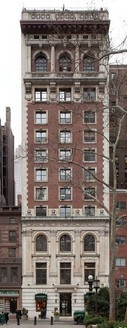
The Engineers' Club, 1897 (image from the Museum of the City of New York)
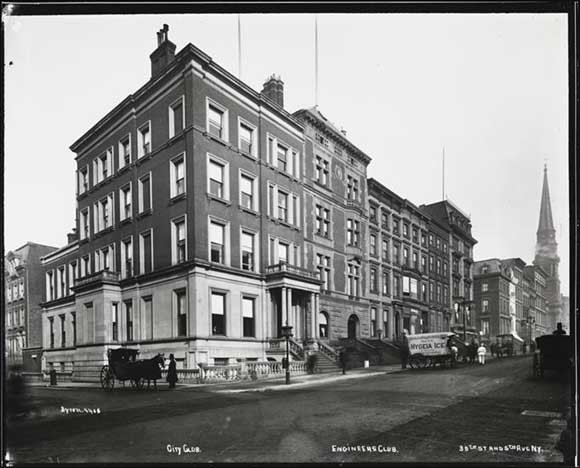
The Engineers' Club, 1905 (image from the Museum of the City of New York)
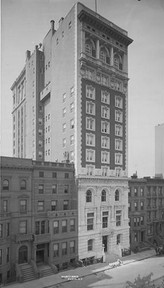
Dining room of the Engineers' Club, 1910 (image from the Museum of the City of New York)
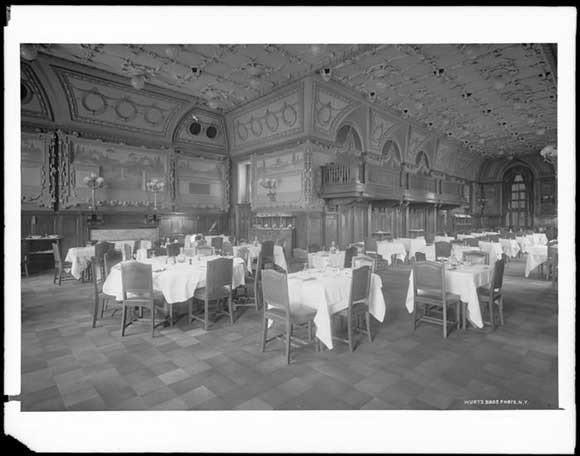
Engineers' Club, 1935 (image from the Museum of the City of New York)
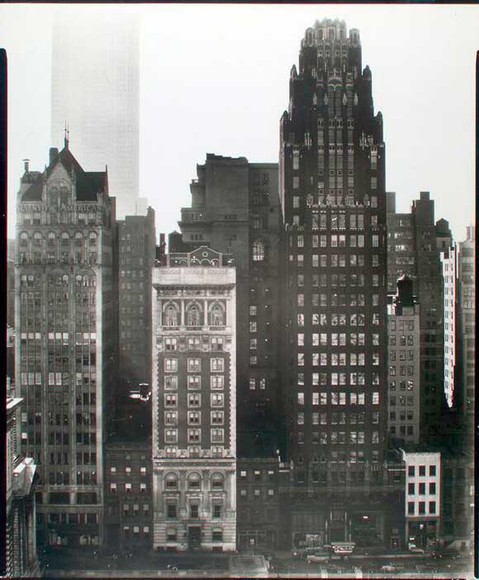
Engineers' Club, 1936 (image from the New York Public Library)
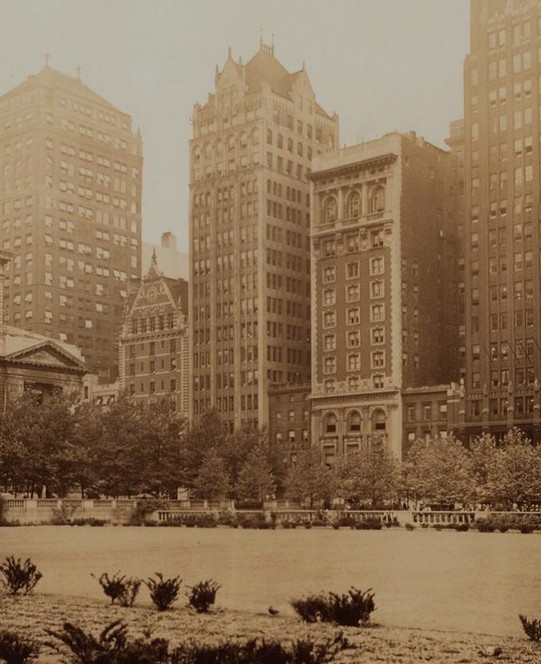
Commemorative plaque for Nikola Tesla on the Bryant Park Place (Engineers' Club) building (image from Tesla Memorial Society of New York)
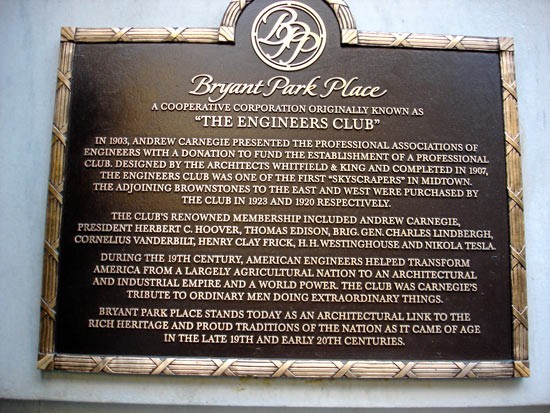
Backstory and Context
Text-to-speech Audio
Whitfield and King, a small architectural firm, won the design contest for the Engineers' Clubhouse contract, most likely in part due to the fact that Whitfield was Carnegie's brother-in-law. Andrew Carnegie's wife, Louise Whitfield Carnegie, laid the cornerstone of the building in 1905. On April 25, 1907, the 12-story Renaissance Revival clubhouse was completed, with the three base stories faced in white marble, the middle seven stories in red brick with marble embellishments, and the top three stories projecting outward. It held 66 bachelor flats, a 300-seat banquet hall and two large dining rooms, a penthouse and roof garden, and club and billiard rooms. The 35% membership increase upon the opening of the new clubhouse made it necessary, within three years, for the Engineers' Club to construct an additional building abutting the clubhouse, which opened in April of 1915. By 1925, the club added to its facilities again by purchasing the buildings to either side of the clubhouse. Additional bedrooms and a lounge were housed at 28 West 40th Street, and additional office space was provided at 36 West 40th.
By 1972, the Engineers' Club was the only remaining club on West 40th Street, and the Engineering Societies had relocated to the United Engineering Center building at 345 East 47th. The Engineers' Club struggled financially and was forced to declare bankruptcy in 1977. The Clubhouse and its two neighboring properties were sold in 1979 and converted for residential use with ground-floor retail. Since 1983, the former Engineers' Club Building has been an apartment house and is now known as Bryant Park Place. The building has seen very few alterations since its construction, the most extensive work having been the expansion of the penthouse apartments and repair work to the marble elements of the exterior in the mid-1990s.
The Engineers' Club Building is a New York City Landmark and a State and National Register of Historic Places listing. It is an early example of a high-rise clubhouse building, looks almost exactly as it did over 100 years ago, and is a visual reminder of the prominence of the social club and the bachelor apartment at the turn of the 20th century, as well as of the commercial transformation of Midtown Manhattan and New York State's role as an engineering center of the United States. In addition, the club boasted prominent historical figures including Andrew Carnegie, President Herbert C. Hoover, Thomas Edison, Charles Lindbergh, Cornelius Vanderbilt, Henry Clay Frick, H.H. Westinghouse, and Nikola Tesla. In fact, when Tesla received the Edison Medal on May 18, 1917, it was in the Engineers' Club Building that his formal dinner reception was held. When the building was added to the National Register of Historic Places in 2007, a commemorative plaque was placed on the building by the Co-op Board.
Inscription:
Bryant Park Place
A COOPERATIVE CORPORATION ORIGINALLY KNOWN AS
"THE ENGINEERS CLUB"
In 1903, Andrew Carnegie presented the professional association of engineers with a donation to fund the establishment of a professional club. Designed by the architects Whitfield and King and completed in 1907, the Engineers Club was one of the first "skyscrapers" in Midtown. The adjoining brownstones to the east and west were purchased by the club in 1923 and 1920 respectively.
The club's renowned membership included Andrew Carnegie, President Herbert C. Hoover, Thomas Edison, Charles Lindbergh, Cornelius Vanderbilt, Henry Clay Frick, H.H. Westinghouse and Nikola Tesla.
During the 19th century, American engineers helped transform America from a largely agricultural nation to an architectural and industrial empire and a world power. The club was Carnegie's tribute to ordinary men doing extraordinary things.
Bryant Park Place stands today as an architectural link to the rich heritage and proud traditions of the nation as it came of age in the late 19th and early 20th centuries.
Sources
"Bryant Park Place." NYC Circa. 7/20/11. Accessed Web, 5/14/17. http://nyccirca.blogspot.com/2011/07/virtually-every-building-in-new-york.html.
"Nikola Tesla Received The Edison Medal." Tesla Memorial Society of New York. Accessed Web, 5/14/17. http://www.teslasociety.com/bryantpark.htm.
